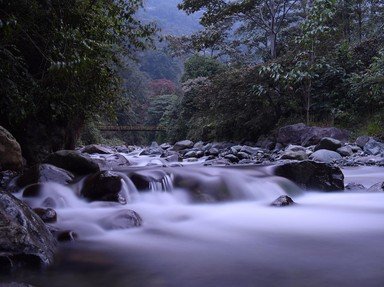Quiz Answer Key and Fun Facts
1. First let's get the overall lay of the land. What are three major land regions that make up South America?
2. Most South Americans live along the coasts of the continent. Can you name the two oceans and the sea that surround it?
3. Our first stop is in Colombia. This country is prone to earthquakes and volcanic eruptions, common for areas that fall within a certain range. Can you name this large, upside-down-horseshoe-shaped range?
4. Ecuador includes a lovely string of islands that support a wide variety of plant and animal wildlife. Famous for hosting Charles Darwin as he developed his theory on natural selection, this archipelago includes approximately how many major and minor islands?
5. We head south toward Peru, home of the largest lake on the continent. Providing a border with neighboring Bolivia, what is the name of this famous lake, without which no quiz on this subject would be complete?
6. Continuing our trip south, we approach Chile, a narrow strip of land squished between the Pacific on the west side and the great Andes on the east. Chile is home to a copper-producing desert; can you name it?
7. Argentina, which takes up most of the southern area of the continent, sports many breath-taking natural wonders. One is named Perito Moreno and, unlike many of its counterparts, it is advancing rather than retreating. What type of feature is Perito Moreno?
8. As we round the southernmost tip of South America, we pass Tierra del Fuego and can see trees growing sideways! What causes this strange phenomenon?
9. Let's venture inland to give the landlocked countries of South America a visit. We're looking at a giant salt flat named Salar de Uyuni that goes through a major transformation in the months of approximately January to March. What happens to it?
10. Now we are back up at the northern point of South America, in Venezuela. This is home to the spectacular Angel Falls, also known as Kerepakupai Vená. What distinction does this waterfall hold?
Source: Author
PootyPootwell
This quiz was reviewed by FunTrivia editor
agony before going online.
Any errors found in FunTrivia content are routinely corrected through our feedback system.


